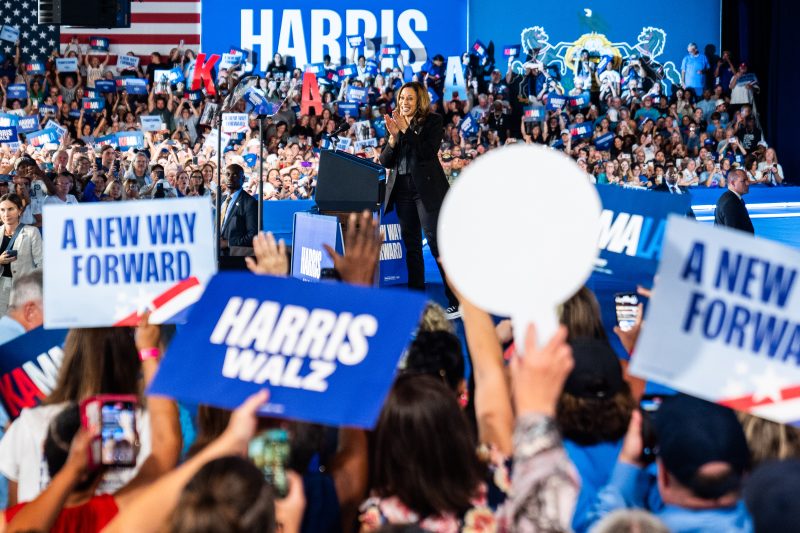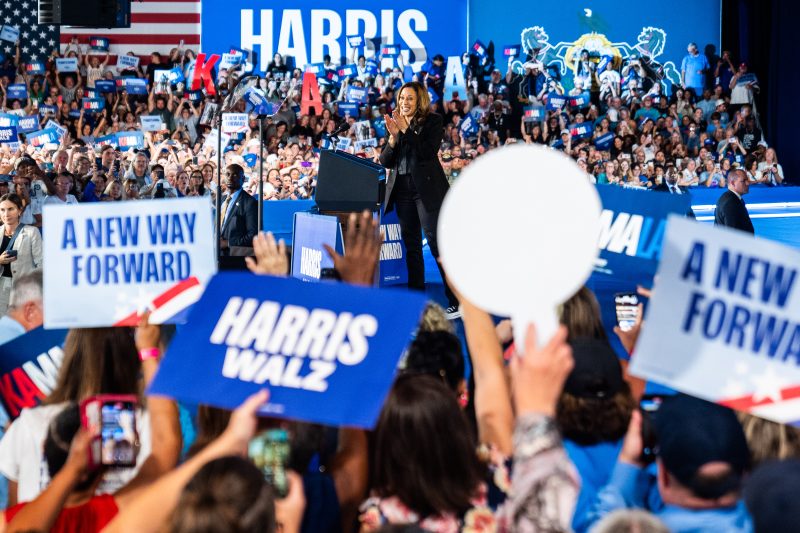
Earlier this year, Americans’ perception of the presidential election was bleak. Both parties were seemingly about to nominate candidates who were broadly disliked — popular within their parties but broadly viewed negatively. The share of Americans indicating that they disliked both candidates was 25 percent, according to the Pew Research Center, the highest level on record. When voters were asked if they would like to see another candidate in the mix, most generally said they did.
And then, suddenly, the Democrats did exactly that. On July 21, after nearly a month of criticism over his performance in a debate against Donald Trump, President Joe Biden dropped out. Vice President Kamala Harris took over. And almost immediately Americans began expressing a lot more support for her as a candidate.
In 538’s average of polls, the percentage of Americans who view Harris favorably has for the first time exceeded the percentage who view her unfavorably. Only barely, mind you; the difference is one-tenth of a percentage point. And those expressing a favorable opinion are still less than half of respondents, thanks to people who aren’t willing to weigh in. But nonetheless this was not a situation that many people would have predicted two months ago.
You can see that the surge in approval of Harris occurred right after she took over as the Democratic Party’s presumptive nominee. Before that point, Harris was viewed negatively on net — about as poorly as Biden. Trump was also viewed negatively, but thanks in part to more support from Republicans, he was less unpopular than the two Democrats.
Once Harris was the nominee, the picture shifted. Quickly. A week later, her net favorability rating was higher than Trump’s. It hasn’t been lower since.
If we look at data from one pollster, YouGov, we can see where those shifts were most prominent. Republicans and older adults didn’t move much. Pretty much everyone else did.
Since the last YouGov poll conducted while Biden was still the Democratic nominee, Harris’s overall net favorability rating has climbed nine points. Among Black Americans, it jumped 24 points. Among people under 30, it is up 19 points. Independents and those with a high school degree or less contributed an improvement of 16 points.
Those are increases in net favorability, so this doesn’t mean that favorable views climbed that much or, certainly, that she is now viewed more favorably than unfavorably with all of those groups. But she is now viewed favorably on net among those with college degrees and with women — two groups that will be instrumental in determining the outcome of the election.
This sudden change of fortune for Harris has been greeted with some confusion. After all, we’re used to a political environment in which views are fairly steady and polling doesn’t change dramatically over short periods. But it’s not as though there’s no precedent for noncandidates to be viewed with skepticism until they actually jump into the race.
The same thing happened in 2015, with a guy named Donald Trump. You probably know what happened next.

